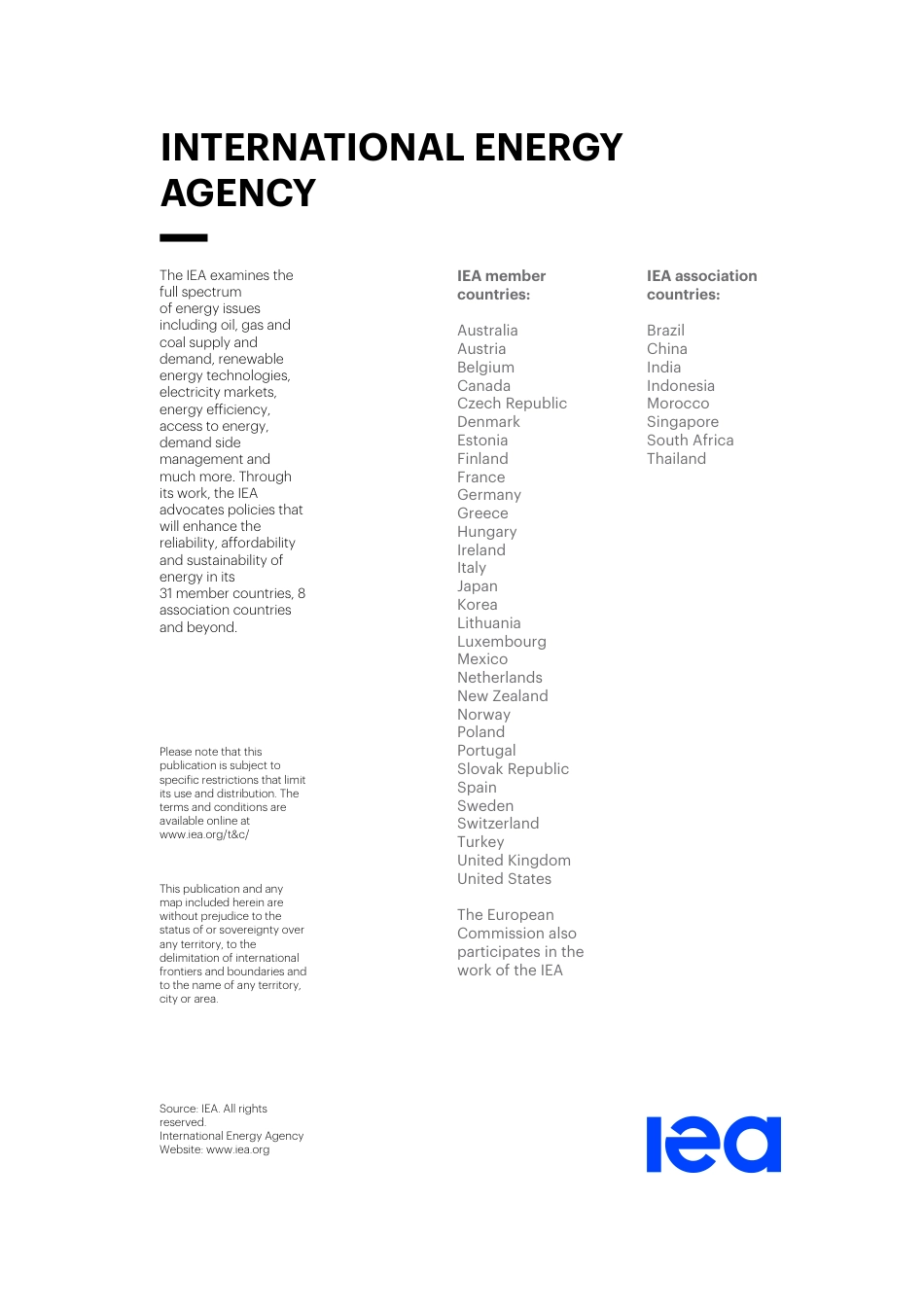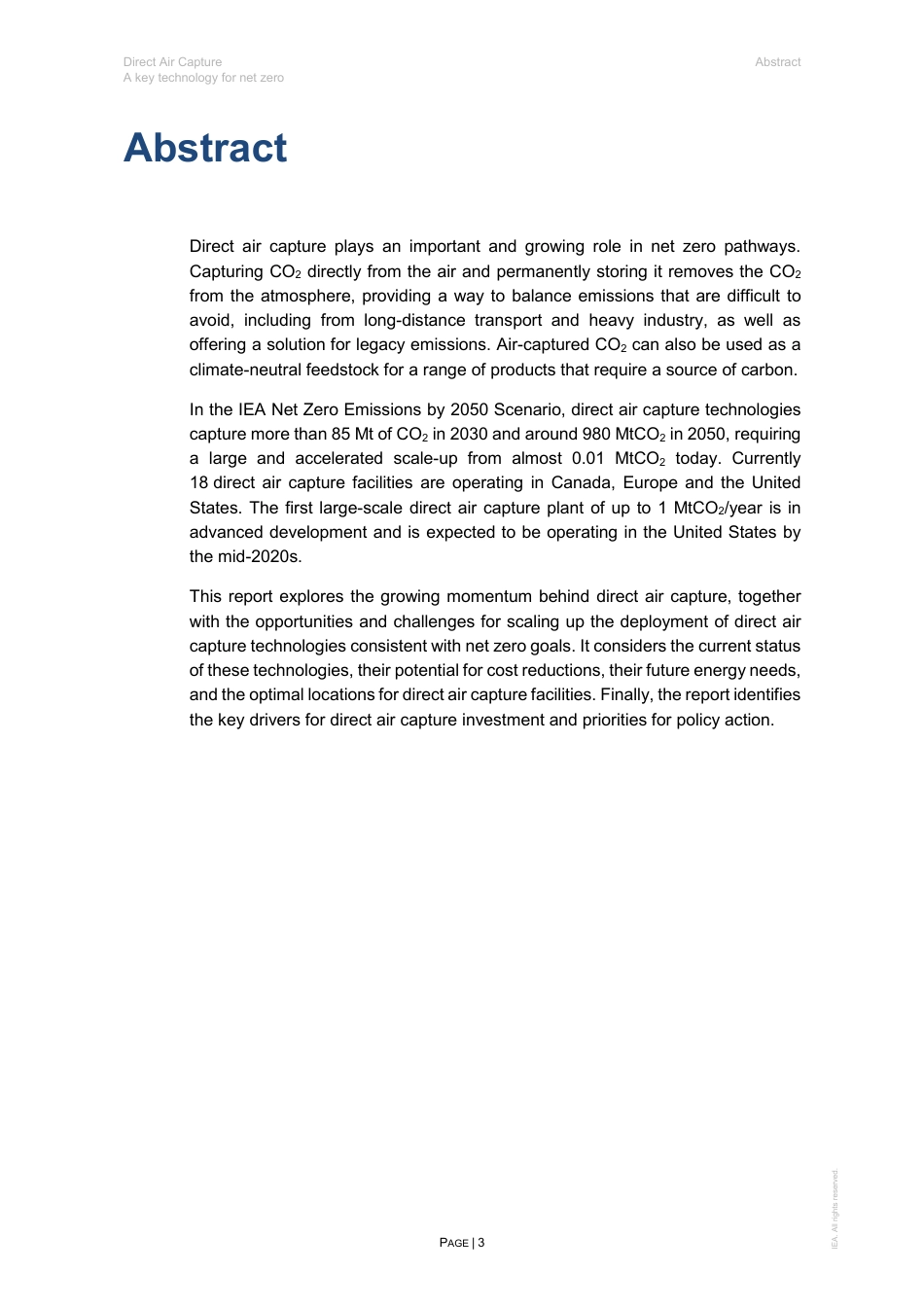Direct Air CaptureA key technology for net zeroThe IEA examines the full spectrum of energy issues including oil, gas and coal supply and demand, renewable energy technologies, electricity markets, energy efficiency, access to energy, demand side management and much more. Through its work, the IEA advocates policies that will enhance the reliability, affordability and sustainability of energy in its 31 member countries, 8 association countries and beyond.Please note that this publication is subject to specific restrictions that limit its use and distribution. The terms and conditions are available online at www.iea.org/t&c/This publication and any map included herein are without prejudice to the status of or sovereignty over any territory, to the delimitation of international frontiers and boundaries and to the name of any territory, city or area.Source: IEA. All rights reserved.International Energy Agency Website: www.iea.orgIEA member countries: Australia Austria Belgium Canada Czech Republic Denmark Estonia Finland France Germany Greece Hungary Ireland ItalyJapanKoreaLithuania Luxembourg Mexico Netherlands New Zealand Norway Poland Portugal Slovak Republic Spain Sweden Switzerland Turkey United Kingdom United States The European Commission also participates in the work of the IEAIEA association countries:BrazilChinaIndiaIndonesiaMoroccoSingaporeSouth AfricaThailandINTERNATIONAL ENERGYAGENCYDirect Air Capture Abstract A key technology for net zero PAGE | 3 IEA. All rights reserved. Abstract Direct air capture plays an important and growing role in net zero pathways. Capturing CO2 directly from the air and permanently storing it removes the CO2 from the atmosphere, providing a way to balance emissions that are difficult to av...



